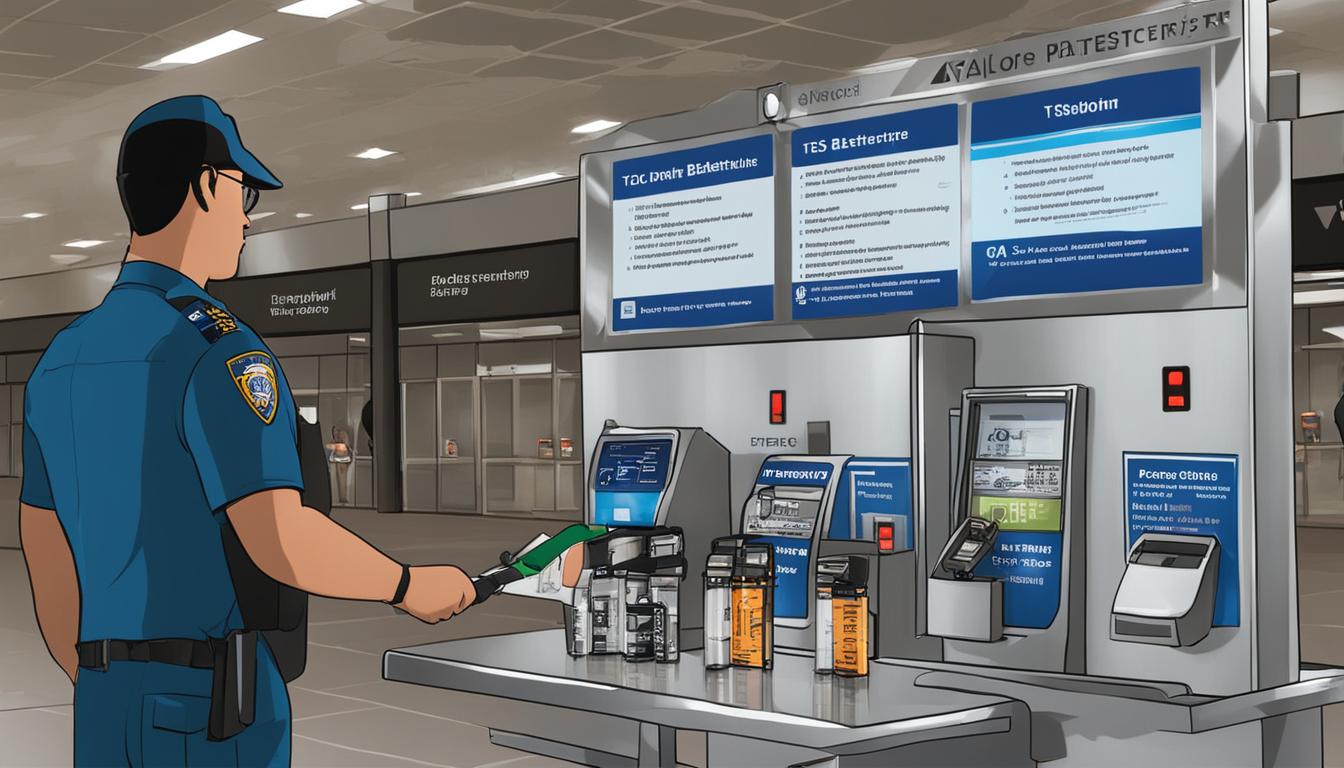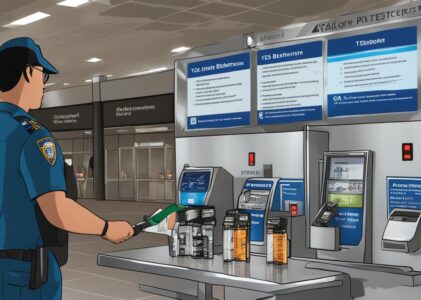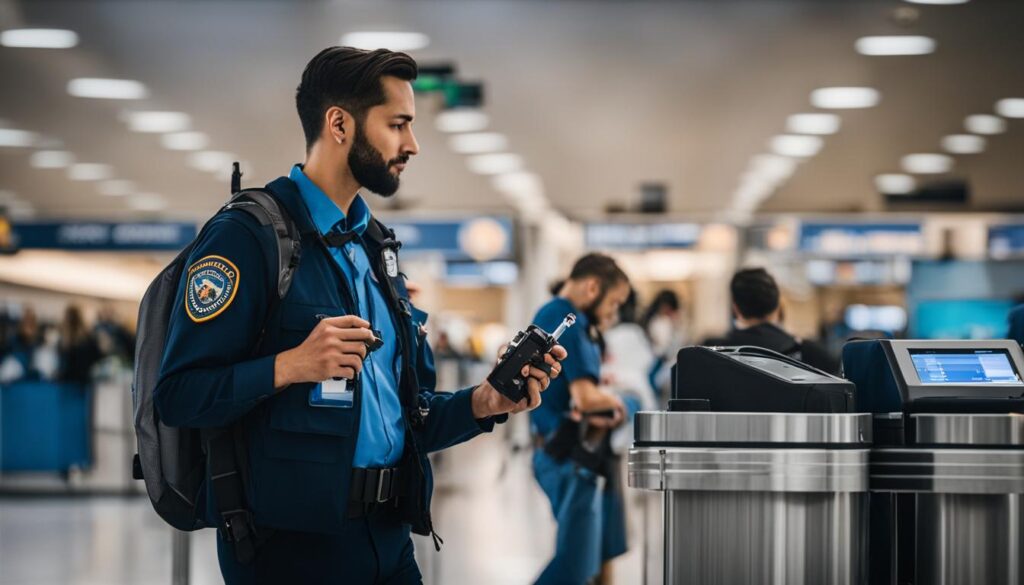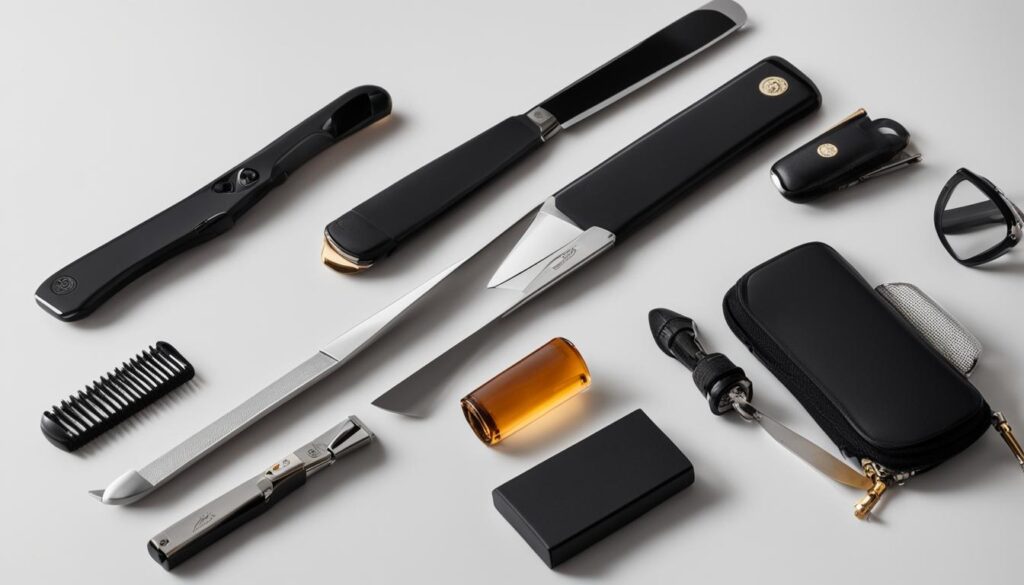Are you wondering if you can bring batteries on a plane? It’s important to know the rules and regulations before you pack your bags. The Federal Aviation Administration (FAA) has implemented safety guidelines for batteries being transported on airplanes, and the Transportation Security Administration (TSA) works closely with the FAA to ensure aviation safety and security.
Here is a breakdown of what you need to know about airline battery restrictions, airplane carry-on battery policy, and TSA battery rules:
Key Takeaways:
- There are regulations for bringing lithium-ion batteries on flights.
- Other types of batteries like dry-cell, nickel-metal hydride, and alkaline batteries are also allowed on planes.
- Follow the instructions of the FAA and TSA to ensure the safety and security of all passengers.
- Pack batteries properly and place them in the appropriate baggage.
- Be informed and compliant to avoid any issues when traveling with batteries.
Regulations for Lithium-ion Batteries on Flights
Lithium-ion batteries are widely used in electronic devices such as laptops, smartphones, and tablets. If you plan to travel with these devices, it’s important to be aware of the regulations regarding lithium-ion batteries on flights.
The Federal Aviation Administration (FAA) imposes certain guidelines to ensure the safe transportation of lithium-ion batteries. These regulations primarily focus on the size and quantity of batteries that can be carried onboard.
According to portable battery regulations, passengers are generally allowed to bring lithium-ion batteries in their carry-on baggage. However, there are restrictions on spare batteries carried separately or battery packs with a certain watt-hour rating.
Regulations for Lithium-ion Batteries on Flights
| Type of Battery | Allowed in Carry-On | Allowed in Checked Baggage |
|---|---|---|
| Consumer-sized lithium-ion batteries (up to 100 watt-hours) | ✔️ | ✔️ |
| Lithium-ion batteries between 100-160 watt-hours | ✔️ | ✖️ |
| Spare lithium-ion batteries | ✔️ | ✖️ |
| Lithium-ion battery packs over 160 watt-hours | ✖️ | ✖️ |
It’s important to note that these regulations may vary depending on the airline and destination. Some airlines may have additional restrictions or require battery watt-hour ratings to be clearly marked on the device.
Before traveling, it’s always recommended to check with your airline or the Transportation Security Administration (TSA) for the most up-to-date information on lithium-ion battery regulations. By following these guidelines, you can ensure a smooth journey with your electronic devices and spare batteries.
Other Battery Types Allowed on Planes
While lithium-ion batteries may be the most common type found in electronic devices, there are several other battery types that are also allowed on planes. These include dry-cell batteries, nickel-metal hydride (NiMH) batteries, and alkaline batteries.
Dry-cell batteries, also known as primary batteries, are commonly used in household items such as flashlights, remote controls, and toys. They are allowed on planes in both carry-on and checked baggage. It’s important to note that damaged or leaking dry-cell batteries may not be permitted, so it’s best to ensure they are in good condition before packing them for your flight.
Nickel-metal hydride (NiMH) batteries are rechargeable batteries commonly used in cameras, power tools, and other portable devices. These batteries are also allowed on planes, both in carry-on and checked baggage. However, like all batteries, they should be properly protected to prevent short circuits.
Alkaline batteries, the type commonly found in household AA and AAA batteries, are also permitted on planes. These batteries can be packed in both carry-on and checked baggage. It’s important to note that loose batteries should be individually protected to prevent contact with other metallic objects, as this can cause a short circuit.
| Battery Type | Permitted in Carry-On Baggage | Permitted in Checked Baggage |
|---|---|---|
| Dry-cell batteries | Yes | Yes |
| Nickel-metal hydride (NiMH) batteries | Yes | Yes |
| Alkaline batteries | Yes | Yes |
It is important to always check with your specific airline and the TSA for any additional restrictions or guidelines regarding battery types allowed on planes. By following the regulations and properly packaging your batteries, you can travel with peace of mind knowing that you are in compliance with aviation safety standards.
Conclusion
In conclusion, you are allowed to bring batteries on a plane with certain restrictions and guidelines. It is important to follow the regulations set by the FAA and TSA to ensure the safety and security of all passengers.
When traveling, remember that there are specific limits on the quantity and type of batteries you can pack. It’s crucial to be aware of these battery limits on planes to avoid any difficulties during security checks.
Always check with your airline and review the airline battery restrictions before packing. Make sure to pack your batteries properly and place them in the appropriate baggage, whether it’s your carry-on or checked bag, following the guidelines provided by the FAA and TSA.
By being informed and compliant, you can travel with batteries without any issues. So, next time you’re planning a trip and wondering, “Can you bring batteries on a plane?” remember to adhere to the airline battery restrictions, pack your batteries correctly, and enjoy your journey worry-free!




